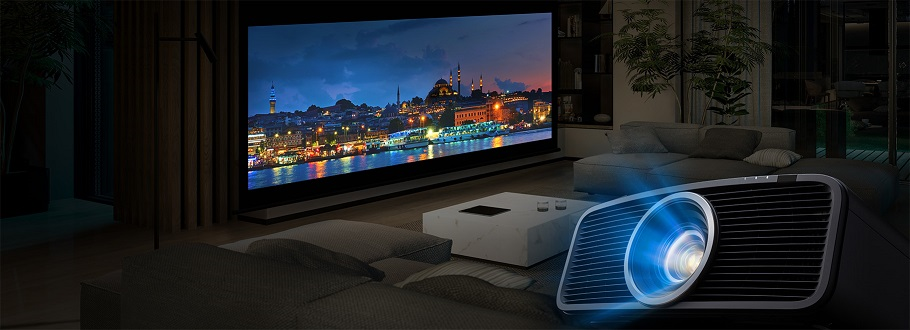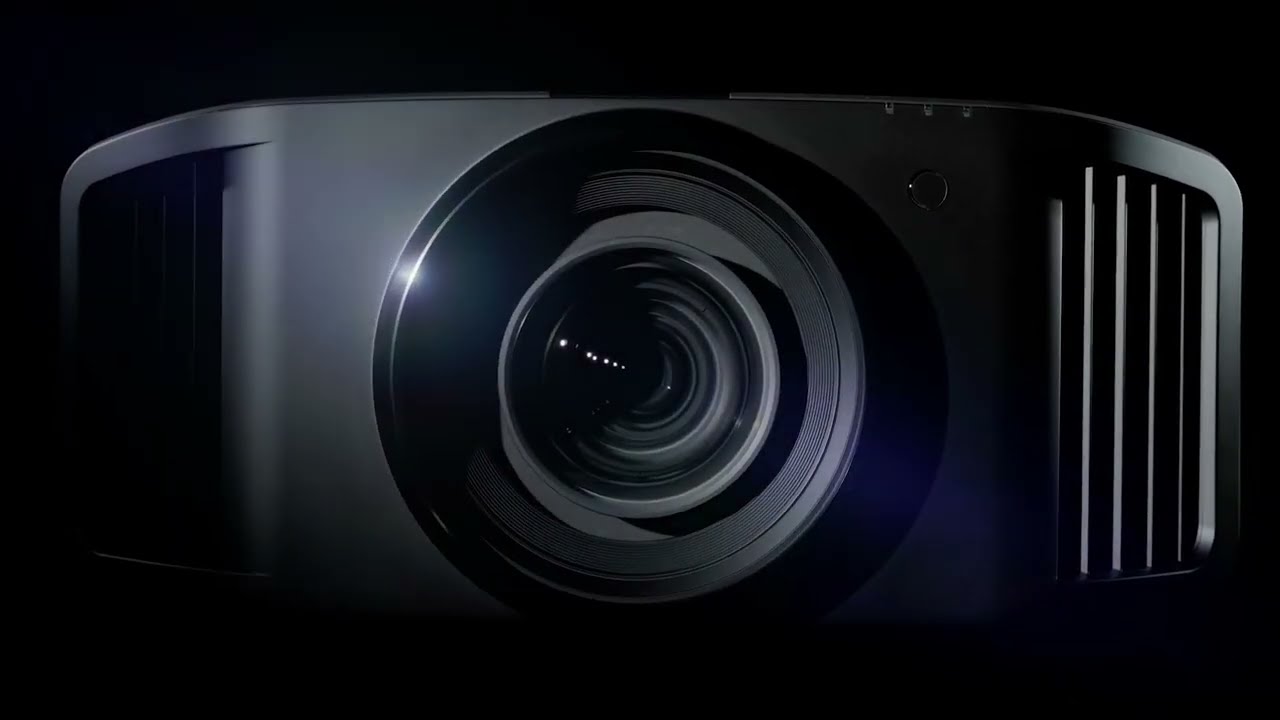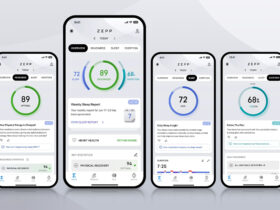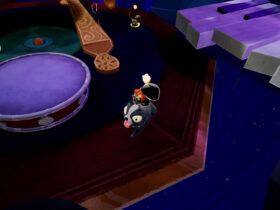JVCKENWOOD Corporation announces the upcoming introduction of the world’s smallest native 4K projectors to the global market. The “DLA-NZ700/RS2200” and “DLA-NZ500/RS1200” will indeed be available starting from the end of November 2024, thus expanding the range of JVC home theatre projectors, which currently consists of two high-end models: the “DLA-NZ900/RS4200” and the “DLA-NZ800/RS3200.”
Both models can be classified as the smallest native 4K projectors in the world*1. This has been achieved by redesigning nearly everything, from the optical unit to the lens and internal circuitry. Additionally, they feature a third-generation 0.69-inch native 4K D-ILA device with improved screen uniformity and a high-efficiency BLU-Escent laser light source for exceptional contrast, superior resolution, and high brightness. Both models are equipped with second-generation Frame Adapt HDR technology, equivalent to that found in higher-end models, producing high-quality HDR images, and a Vivid mode that enhances SDR content with more vibrant colours. Now, the entire D-ILA range is equipped with a laser light source, allowing for an optimal viewing experience of high-definition images, all condensed into an extremely compact design.
Main Features
1. Thanks to the New Design, here are the world’s smallest native 4K projectors
- — Redesigned components: the optical unit, lens, and internal circuitry have all been redesigned to create the smallest native 4K projector in the world.
- — A 35% reduction in size compared to the previous DLA-NZ7/RS2100, while incorporating a laser light source and a native 4K D-ILA device.
- — By positioning heat disposal at the back, the potential impact on the projected image has been eliminated, providing greater flexibility for installation.
- — Less plastic, which reduces transportation expenses and enhances environmental sustainability.
2. The third-generation 0.69-inch native 4K D-ILA device enhances video quality
- — The 0.69-inch native 4K D-ILA device has been upgraded to the third generation to improve details in dark scenes.
- — The DLA-NZ700/RS2200 achieves a native contrast of 80,000:1 while simultaneously improving pixel alignment and flatness control.
- — Improved uniformity of illumination across the entire screen, providing outstanding image quality from every visible angle.
3. High brightness and long lifespan thanks to BLU-Escent laser light source technology
- — Blu-Escent, JVC’s proprietary laser light source technology, uses a blue laser diode that achieves high brightness of 2,300 lumens for the DLA-NZ700/RS2200 and 2,000 lumens for the DLA-NZ500/RS1200. Both models have a laser lifespan of approximately 20,000 hours.
- — The DLA-NZ700/RS2200 has double the brightness per watt of actual power compared to the first Blu-Escent laser-equipped model, the DLA-Z1, released in January 2017 with a brightness of 3,000 lumens.
- — Using a laser light source eliminates harmful substances found in lamps.
4. Newly designed fully motorized 4K lens offers high resolution and installation flexibility
- — A newly designed wide-aperture 4K lens (80 mm, 11 groups, 15 elements) that delivers native uniform D-ILA 4K resolution in every corner of the screen.
- — Fully electric lens adjustments (Shift, Zoom, Focus), with a vertical shift of 70% and horizontal shift of 28% for easy installation.
- — Lens memory function for added convenience when using Cinemascope-format screens.
5. “Frame Adapt HDR Generation 2” for optimal HDR content reproduction
- — Frame Adapt HDR Generation 2 instantly analyses the maximum brightness of each frame in any HDR10 content using a proprietary algorithm. This allows for real-time tone mapping optimized for the projector’s dynamic range, producing brighter HDR images with more vivid colours and a wider dynamic range.
- — The Deep Black feature expands dark tones to maximize the dynamic range of the native “D-ILA” 4K device and enables a more realistic representation of dark areas with greater contrast.
- — The HDR level is automatically detected based on the Max Display Mastering Luminance (DML), a specific parameter contained in the video stream that provides information about the maximum luminance of the monitor used by the content creators, enabling optimal tone mapping.
6. Equipped with Vivid Image mode that reproduces SDR content with vibrant colours
The Vivid Image mode is an SDR (Standard Dynamic Range) image mode that reproduces content with more vibrant colours. You can enjoy popular SDR video content, such as animations, with bright and rich colours.
7. Dynamic control of the laser light source allows for images that closely resemble human perception
- — JVC’s patented BLU-Escent laser light source technology uses a series of laser diodes that enable instantaneous control of light emission with less delay than conventional mechanical openings/closures.
- — The light source can be completely turned off to achieve ∞:1 dynamic contrast in completely black scenes.
- — Light source control in 101 steps allows precise adjustments of light intensity according to the projection environment or desired brightness on the screen.
- — Equipped with various operating modes using the same control algorithm as higher-end models.
8. FILMMAKER MODE to faithfully recreate the original intentions of the director and creator
The new models come with FILMMAKER MODE, an image quality mode developed by the UHD Alliance that aims to faithfully reproduce films according to the director’s standards in your home theatre system. When using FILMMAKER MODE, certain processing controls are disabled, and the colour temperature is set to D65 (6500 K), allowing you to enjoy films and various video content in their original quality.
9. Colour filters enable reproduction of images with a wide colour gamut equivalent to the DCI-P3 standard
The CINEMA FILTER unleashes the wide colour gamut of the DCI-P3 cinematic standard. HDR content available on UHD Blu-ray, which has a much broader colour range, can be richly represented, for instance, with fine gradations of the sky and sea and with the contrast between crimson roses and green rows of trees.
Other Features
- Equipped with “Ultra High Contrast Optics” specifically designed for this model to achieve clear and vivid images.
- The user interface has been redesigned. The menu structure has been revised to facilitate access to frequently used functions.
- ISF certified video quality standards. Image calibration can be performed by a certified ISF video technician.
- The “Installation Mode” function allows you to easily store and recall up to five types of installation settings, including lens memory, pixel adjustments, and screen masks.
- The Automatic Calibration function optimizes all essential elements present in the image, including gray scale balance, gamma characteristics, and colour space, using an external optical sensor and proprietary software. With the sensor and software, optimal calibration can be applied in just a few simple steps to adapt to changes in optical characteristics caused by the installation environment.
- The “Screen Adjustment Mode” compensates for colour imbalances caused by the specific characteristics of the screen.
Trademarks
- D-ILA, e-shift, BLU-Escent, Frame Adapt HDR, and Clear Motion Drive are trademarks or registered trademarks of JVC Kenwood Corporation.
- The HDR10+TM logo is a trademark of HDR10+ Technologies, LLC.
- HDMI, HDMI High-Definition Multimedia Interface, the HDMI trade name, and the HDMI logo are trademarks or registered trademarks of HDMI Licensing Administrator, Inc.
- Other company and product names may be trademarks or registered trademarks of their respective companies.
- The content of this document is up-to-date at the time of presentation. Please note that information may differ from the most recent version.
- Design and specifications are subject to change without notice.
- All rights not expressly granted in this document are reserved.










